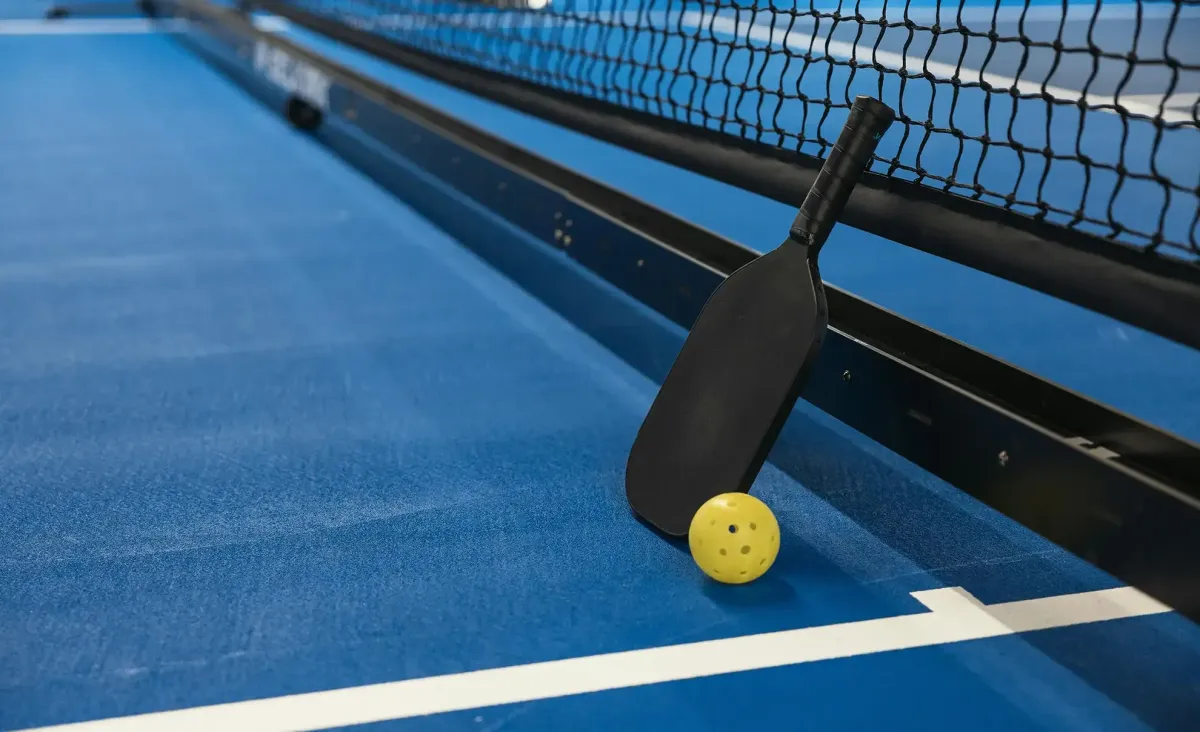
How Much Does It Cost To Build a Pickleball Court?
How Much Does It Cost To Build a Pickleball Court?
What is Pickleball?
Pickleball is a paddleball sport that combines elements of tennis, badminton, and table tennis. It's played on a court similar to a doubles badminton court with a net in the middle. The game is engaging, and its popularity is on the rise due to its simplicity and social nature. Players of all ages and skill levels can pick up the game quickly, making it a favorite among families and communities. Its low-impact nature also makes it accessible for older adults looking for a fun way to stay active.
The sport was invented in the mid-1960s and has grown steadily since then, with an estimated 3 million players in the United States alone. The game fosters a sense of community, as it encourages doubles play, which promotes teamwork and social interaction. This social aspect is one of the key reasons why pickleball has become so popular in neighborhoods and retirement communities.
Basic Pickleball Court Dimensions
Before delving into costs, it's crucial to understand the size and layout of a standard pickleball court. A pickleball court measures 20 feet wide by 44 feet long for both singles and doubles play. The dimensions are similar to a badminton court, and it includes a non-volley zone, called the kitchen, on each side of the net. This area, which spans 7 feet from the net on both sides, is crucial for game strategy, as it restricts volleying close to the net.
The court is divided into two equal halves by a net that stands 36 inches high at the sidelines and 34 inches high in the center. Understanding these dimensions helps in planning the space in your backyard and ensures that your court meets official standards. Proper markings and boundary lines are essential not only for gameplay but also for player safety, ensuring everyone knows where to stand and move during play.
How Much Does It Cost to Build a Pickleball Court?
The cost to build a pickleball court can vary significantly based on several factors, including the type of materials used, the location, and additional features you might want to add. Here's a breakdown of the key costs involved:
Site Preparation
Site preparation is the first step in building your pickleball court. It includes clearing the area, leveling the ground, and ensuring proper drainage. This phase can cost anywhere from $3,500 to $5,000, depending on the complexity of the terrain and local labor rates. A flat, clear site will naturally cost less to prepare than a sloped or heavily wooded area, where additional work is required.
Proper drainage is crucial to prevent water from pooling on the court, which can lead to surface damage and unsafe playing conditions. Investing in good site preparation ensures the longevity of your court and reduces maintenance costs in the long run. Additionally, some homeowners may need permits for significant land alterations, adding another layer of complexity and potential costs.
Surface Material
The surface material is one of the most significant cost factors. The most common surface for pickleball courts is asphalt, similar to tennis courts, which costs between $3 to $5 per square foot. For a concrete surface, which is more durable, you might pay $4 to $10 per square foot. This means the total cost for an asphalt surface ranges from $2,640 to $4,400, while concrete can cost from $3,520 to $8,800.
Asphalt courts are popular due to their affordability and ease of installation, but they may require more maintenance over time. Concrete, while more expensive initially, offers a smoother playing surface and greater longevity, reducing long-term maintenance expenses. Some players also opt for court acrylic coatings over these materials, which can enhance performance and extend the life of the surface, though this will add to the cost.
Fencing
Fencing is essential to keep the balls in play and provide a boundary for the court. The average cost for chain-link fencing around a pickleball court is between $15 and $40 per linear foot. For a standard court, fencing can cost between $1,200 and $3,200. The height of the fence can vary based on personal preference, but typically ranges from 4 to 10 feet.
In addition to functionality, fencing can also add an aesthetic element to your backyard. Options like vinyl-coated chain-link or decorative metal fences can enhance the appearance of your court, albeit at a higher cost. Regardless of the material chosen, a well-installed fence is essential for maintaining safety and security around your court.
Net and Posts
The net and posts are critical for gameplay. A decent-quality pickleball net and post set can range from $200 to $400. You might also consider investing in a portable net system if you need flexibility or have limited space. Portable nets allow you to set up and dismantle the court as needed, providing versatility for multi-use spaces.
High-quality nets made from durable materials can withstand outdoor conditions better and last longer, offering a good return on investment. When selecting posts, ensure they are sturdy enough to handle tension from the net and weather conditions. Some systems offer adjustable heights, allowing for use in other sports like tennis or badminton, increasing the utility of your investment.
Lighting
If you plan to play at night, installing lighting is a must. The cost of adding lighting to your pickleball court can vary widely based on the type of lights and installation complexity. Expect to pay between $2,000 and $4,000 for basic lighting setups. LED lights are recommended for their energy efficiency and bright, clear illumination.
Lighting not only extends playing time but also enhances safety by improving visibility, reducing the risk of accidents. Well-planned lighting should evenly cover the entire court without causing glare or shadows that can interfere with gameplay. For those living in areas with light ordinances, it's important to choose fixtures that minimize light pollution.
Additional Features
Additional features like windscreens, seating, or a shaded area can enhance your playing experience. These are optional but can add another $500 to $2,000 to your total cost. Windscreens can help reduce wind interference and increase privacy, while seating provides comfort for players and spectators.
A shaded area or gazebo can offer a place to rest and socialize between games, making your court a more inviting space for gatherings. Other enhancements might include scoreboards, water stations, or storage for equipment, each contributing to a more convenient and enjoyable playing environment.
Total Estimated Cost
Considering all these elements, the total cost to build a standard pickleball court in your backyard typically ranges from $10,000 to $30,000. This estimate covers basic installations. However, high-end materials and additional features can push the cost higher. It's important to budget for potential unexpected expenses, such as site-specific challenges or material shortages.
While this may seem like a significant investment, the value it adds to your property and lifestyle can be substantial. A well-constructed court can become a central hub for recreation and socializing, providing endless hours of enjoyment. Furthermore, a personal court can increase property appeal and resale value, particularly in areas where the sport is growing in popularity.
DIY vs. Hiring Professionals
DIY Pickleball Court
Building a pickleball court yourself can save money, especially if you have construction experience. However, it requires significant time and effort. You will need to manage the entire project, from acquiring materials to ensuring proper installation. The cheapest way to build a pickleball court is by doing it yourself, potentially reducing costs by 30-50% compared to hiring professionals.
Taking on a DIY project also allows for customization and personal touches that might not be possible with a hired crew. However, the quality of the final product depends heavily on your skills and resources, and mistakes can be costly. It's essential to carefully assess your capabilities and consider whether the time and effort saved by hiring professionals might outweigh the cost savings.
Hiring Professionals
Hiring professionals ensures that the court is built to standard specifications and may include warranties or maintenance services. Professionals handle everything from site preparation to final touches, offering peace of mind and a quality finish. With their expertise, you can avoid common pitfalls and ensure your court meets all necessary regulations and standards.
While this option is more expensive, it often results in a higher-quality product that requires less maintenance. Professional builders often have access to better materials and can complete the project more efficiently. Plus, the inclusion of warranties can provide long-term savings by covering repairs and maintenance.
Conclusion
Building a pickleball court in your backyard is a rewarding project that can offer years of enjoyment for you and your family. Whether you choose to DIY or hire professionals, understanding the costs involved helps you plan and budget effectively. From site preparation to finishing touches, every aspect of construction plays a role in the overall cost and quality of your court.
A well-designed court can enhance your home life, providing a space for exercise, relaxation, and social gatherings. As pickleball continues to grow in popularity, having your own court means you're always ready to host a game. So, gather your paddles, invite your friends, and enjoy the game of pickleball on your very own court!




